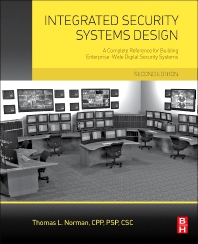A widely held perception is that smart buildings are cost-effective only for large commercial properties of over 100,000 square feet. But through a recent project the Metropolitan Area Advisory Committee (MAAC) a San Diego County non-profit that supplies life-changing services to individuals and families found a quick and easy way to save energy and money at its San Marcos Head Start Center. The non-profit worked with CANDI, an Internet of Things (IoT) technology company that connects devices and data to the services that create smart buildings, to retrofit the 20,000 square-foot day care center into an affordable “green” building. The facilities team at the San Marcos Head Start Center now has the information needed to optimize energy performance, remotely diagnose and control the building’s HVAC systems, and reduce the frequency of maintenance visits.
CANDI worked with partners to donate devices and implementation support to help MAAC affordably retrofit its San Marcos child development center. The facility, located in San Diego County, is open 12 hours a day, operates a kitchen with walk-in freezer, and includes offices, classroom, and day care areas. Air conditioning is critical most of the year to maintain a comfortable environment for the staff and many small children. CANDI donated an Intel BMP gateway and two powerful eGauge meters, and RCS Technology donated three ZigBee-connected thermostats. Those donations saved the non-profit about $1,450. MAAC funded project management, the remaining equipment, installation labor, and fees for a total investment of about $4,500.
CANDI provided technical guidance for the simple one-day installation at the San Marcos Head Start Center. Oscar Matos, MAAC facilities manager, oversaw the project, and local integrator Velociti executed the installation. On installation day, power was dropped in half of the building at a time to install the energy meters and replace existing thermostats. The meters monitored the building’s main electrical circuits, HVAC, and refrigeration equipment. The thermostats controlled split-unit heat pumps. MAAC’s IT department was consulted but needed minimal involvement, as the Intel BMP gateway is network-ready out of the box. The smart thermostats and energy meters were configured through the CANDI PowerTools application. Before the day ended, data was already flowing to provide new insights into the building’s energy use.
“With about 400,000 square feet distributed across 17 sites throughout northern San Diego County, MAAC is always looking for ways to reduce energy costs and improve operating efficiency so that budgets can be optimized for programs that benefit children and families,” said Oscar Matos, a facilities manager for MAAC. “The installation at our San Marcos facility was so easy and effective that I didn’t even need to be onsite. After about an hour of training, we were up and running and able to easily access energy and HVAC data and settings at any time from a computer or smartphone.”
Within a month, the installation started to pay off. For example, when a higher-than-expected energy use over a weekend was observed, the multi-channel energy monitoring capability made it fast and easy to drill down into the data to diagnose and identify a specific heat pump responsible for the off-hour energy consumption. That data prompted a discussion with the facility’s staff, revealing that a staff member had manually overridden a thermostat. The dialog resulted in an agreement on an automated setting that is both comfortable and efficient. Having detailed information is helping the facilities team reduce ongoing costs by remotely monitoring anomalies and energy waste caused by manual overrides, doors and windows left open, equipment problems, and the like. Longer term, the benefits of reduced energy costs, fewer site visits, remote equipment monitoring and control, and a more consistently comfortable environment for the on-site staff and families combine to make a strong case for affordable, easy-to-implement smart buildings.





